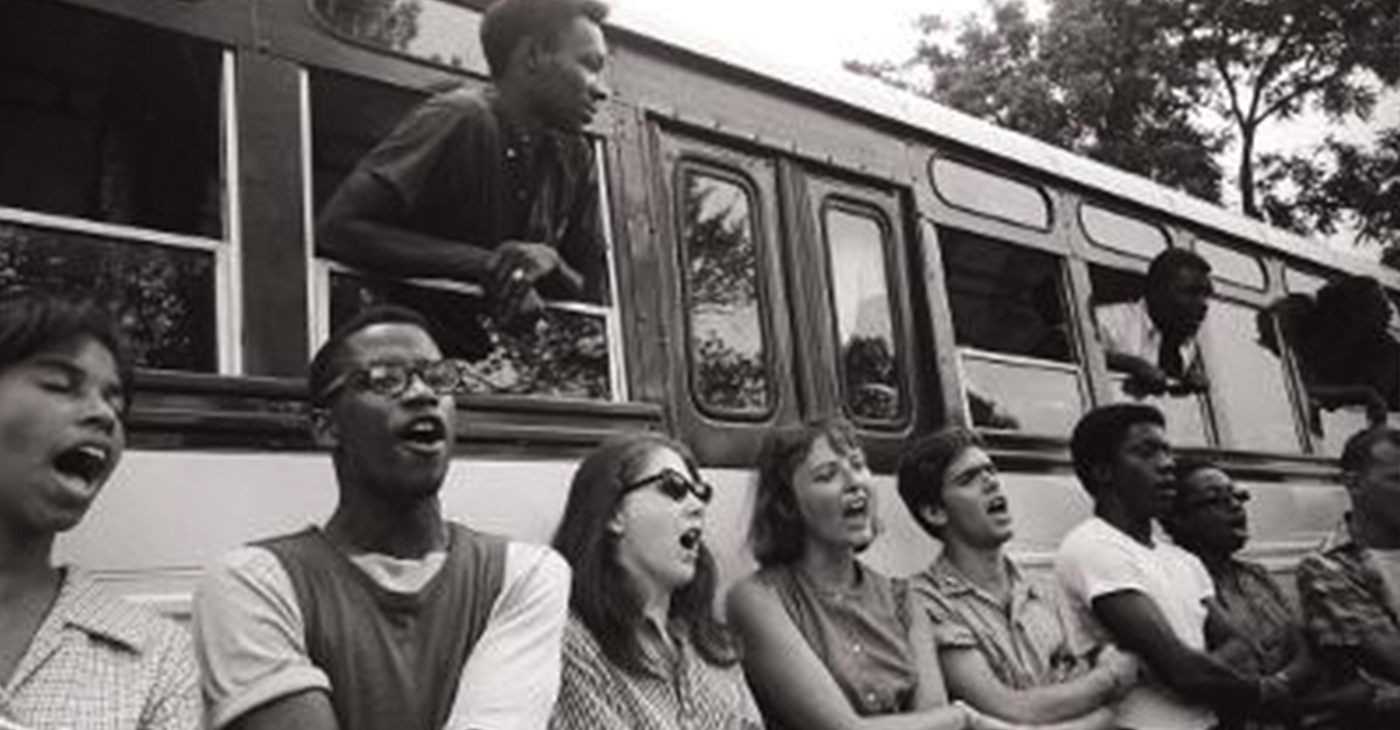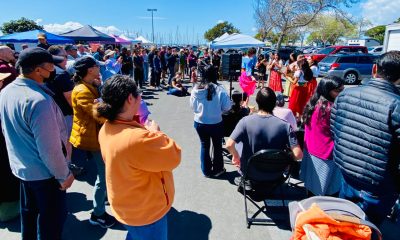Black History
Freedom Summer, A Turning Point in The Civil Rights Movement
Devices used to deter voters included literacy tests and poll taxes, a fee that must be paid by Blacks in order to vote. And Mississippi led the pack, boasting the lowest number of Black registered voters: less than 7% of those who were eligible. These issues led to a 1964 voter registration drive aimed at increasing the number of registered Black voters in Mississippi. It was called Freedom Summer, also dubbed the Mississippi Summer Project.

By Tamara Shiloh
It was 1964 and the Civil Rights Movement was in full swing. Three years before, unforgettable history had been made: Freedom Riders (groups of white and African American civil rights activists who participated in Freedom Rides) traveled via bus throughout the segregated South fighting Jim Crow laws; and Martin Luther King, Jr. delivered his famous “I Have a Dream” speech at the March on Washington in 1963. What took place then was called “progress.”
Still, the South remained segregated, especially at polling places. Blacks were abused, attacked, threatened, and some were killed when attempting to exercise their right to vote.
Devices used to deter voters included literacy tests and poll taxes, a fee that must be paid by Blacks in order to vote. And Mississippi led the pack, boasting the lowest number of Black registered voters: less than 7% of those who were eligible.
These issues led to a 1964 voter registration drive aimed at increasing the number of registered Black voters in Mississippi. It was called Freedom Summer, also dubbed the Mississippi Summer Project.
The project was organized by civil rights groups such as the Congress on Racial Equality (CORE) and the Student Non-Violent Coordinating Committee (SNCC) and run by the local Council of Federated Organizations. More than 700 volunteers (mostly white) joined Mississippi Blacks in the fight against voter intimidation and discrimination.
They, too, were met with the same level of violence, all perpetrated by the Ku Klux Klan alongside some local and state law enforcement officers. Reports from the press drew international attention to America’s racist treatment of its Black citizens.
As the summer grew hotter, the violence escalated.
Michael Schwerner and Andrew Goodman, white students from New York, and James Chaney, a Black man from Meridian, Miss., arrived in Philadelphia, Miss., on June 15. There, the trio was tasked to investigate a church burning. The arson was not resolved, and the three men had been kidnapped.
Six weeks later, their bodies were recovered: beaten and lynched by a Klan mob.
Public outcry mounted as the hunt for their killers began. Schwerner, Goodman, and Chaney became nationally known. The press dubbed the crime “the Freedom Summer murders.”
Distrust crept in between white and Black volunteers and staff. There were 17,000 Blacks in Mississippi that summer attempting to register to vote. Sadly, only 1,200 were successful. Still, progress was made.
The project established 40-plus Freedom Schools serving 3,000 adults and children to read. National attention spurred by the press convinced then-president Lyndon B. Johnson and Congress to pass the Civil Rights Act of 1964, squashing segregation in public places and banning all employment discrimination.
The violence of Freedom Summer eventually cooled, as did some relationships among those active within the Civil Rights Movement. Anger over the violence and deaths spurred a split: those who continued to believe in non-violence and those who had begun to doubt whether equality could be reached through peaceful means. After 1964, more militant factions would rise as the struggle for equality continued.
The events of Freedom Summer led to the passing of the Voting Rights Act of 1965. And still, the struggle continues.
Activism
Oakland Post: Week of April 24 – 30, 2024
The printed Weekly Edition of the Oakland Post: Week of April 24 – 30, 2024

To enlarge your view of this issue, use the slider, magnifying glass icon or full page icon in the lower right corner of the browser window. ![]()
Activism
Oakland Post: Week of April 17 – 23, 2024
The printed Weekly Edition of the Oakland Post: Week of April 17 – 23, 2024

To enlarge your view of this issue, use the slider, magnifying glass icon or full page icon in the lower right corner of the browser window. ![]()
Black History
Matthew Henson: Explorer Extraordinaire
Matthew Henson, a trailblazing explorer who overcame countless obstacles to leave an incredible mark on history. Born on August 8, 1866, in Charles County, Maryland, his journey is a testament to the power of determination and the spirit of adventure.

By Tamara Shiloh
Matthew Henson, a trailblazing explorer who overcame countless obstacles to leave an incredible mark on history. Born on August 8, 1866, in Charles County, Maryland, his journey is a testament to the power of determination and the spirit of adventure.
Henson’s life began amidst the backdrop of post-Civil War America, where opportunities for African Americans were scarce. From a young age, he possessed an insatiable curiosity about the world beyond his small town. At the age of 12, he embarked on a journey that would change the course of his life forever when he joined a merchant ship as a cabin boy.
His most famous expedition was his journey to the Arctic with renowned explorer Robert E. Peary. In 1887, Henson joined Peary’s crew as a seaman and quickly proved himself to be invaluable with his skills as a navigator and craftsman. Over the course of several expeditions, Matthew endured extreme cold, treacherous terrain, and grueling conditions as he and Peary sought to reach the elusive North Pole.
In 1908–09, Peary set out on his eighth attempt to reach the North Pole. It was a big expedition, with Peary planning to leave supplies along the way. When he and Henson boarded their ship, the Roosevelt, leaving Greenland on August 18, 1909, they were joined by a large group. This included 22 Inuit men, 17 Inuit women, 10 children, 246 dogs, 70 tons of whale meat, blubber from 50 walruses, hunting gear, and tons of coal.
In February, Henson and Peary left their anchored ship at Ellesmere Island’s Cape Sheridan, along with the Inuit men and 130 dogs. They worked together to set up a trail and supplies along the way to the Pole.
Peary picked Henson and four Inuit people to join him in the final push to the Pole. However, before they reached their destination, Peary couldn’t walk anymore and had to ride in a dog sled. He sent Henson ahead to scout the way. In a later interview with a newspaper, Henson recalled being in the lead and realizing they had gone too far. The group turned back, and Henson noticed his footprints helped guide them to their destination. At that location, Henson planted the American flag.
Henson’s legacy extends far beyond his expeditions to the Arctic. He shattered racial barriers in the world of exploration and inspired countless individuals, regardless of race, to dream big and pursue their passions. In 1937, he was finally recognized for his achievements when he was inducted into The Explorers Club, an organization dedicated to promoting scientific exploration and field research.
Matthew Henson died in the Bronx, New York, on March 9, 1955, at the age of 88.
-

 Community2 weeks ago
Community2 weeks agoFinancial Assistance Bill for Descendants of Enslaved Persons to Help Them Purchase, Own, or Maintain a Home
-

 Activism3 weeks ago
Activism3 weeks agoOakland Post: Week of April 3 – 6, 2024
-

 Business2 weeks ago
Business2 weeks agoV.P. Kamala Harris: Americans With Criminal Records Will Soon Be Eligible for SBA Loans
-

 Community2 weeks ago
Community2 weeks agoAG Bonta Says Oakland School Leaders Should Comply with State Laws to Avoid ‘Disparate Harm’ When Closing or Merging Schools
-

 Activism2 weeks ago
Activism2 weeks agoOakland Post: Week of April 10 – 16, 2024
-

 Community1 week ago
Community1 week agoOakland WNBA Player to be Inducted Into Hall of Fame
-

 Community1 week ago
Community1 week agoRichmond Nonprofit Helps Ex-Felons Get Back on Their Feet
-

 City Government2 weeks ago
City Government2 weeks agoLAO Releases Report on Racial and Ethnic Disparities in California Child Welfare System





















































